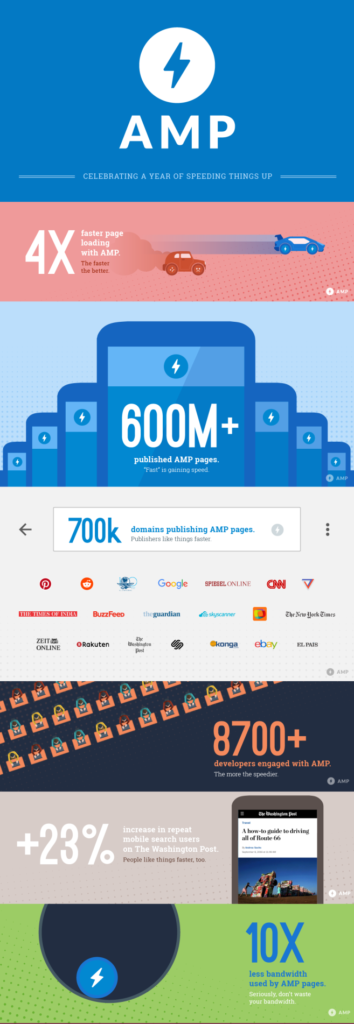Reviewing the mobile web after one year of Accelerated Mobile Pages
 Recognizing the mobile web revolutionized the way people use the internet, last year Google responded with the Accelerated Mobile Pages Project. The project aimed to improve mobile performance with faster–loading mobile pages.
Recognizing the mobile web revolutionized the way people use the internet, last year Google responded with the Accelerated Mobile Pages Project. The project aimed to improve mobile performance with faster–loading mobile pages.
Prior to AMP, mobile web research from Google showed that 53% of mobile site visits are abandoned if loading time took over three seconds. As a result, millions of websites and online advertisers were losing mobile viewership. AMP’s goal was to load content and ads instantaneously, including graphics and video.
In order to build both fast and content–rich web pages, AMP relies on the new open framework AMP HTML. A number of major companies embraced the integration of AMP HTML, including Twitter, Adobe Analytics and and WordPress.com.
AMP’s ‘Year In Review’ Report
Celebrating its one year anniversary, the AMP HTML website released their Year In Review detailing achievements since AMP’s debut. The findings show that a faster mobile web means more repeat users who stay longer.
- Washington Post — 23% increase in mobile search users who return within 7 days
- Slate — 44% increase in monthly unique visitors and a 73% increase in visits per monthly unique visitor
- Gizmodo — 80% of Gizmodo’s traffic from AMP pages is new traffic, 50% increase in impressions
- Wired — 25% increase in click-through rates from search results, with CTR on ads in AMP stories up by 63%.
- Relay Media — says users reading AMP pages spend 10% more time than those who land on regular mobile pages.
In other words, faster is better. Millions of websites, users and online advertisers benefit from a faster mobile web. One case study showed Click Through Rates (CTRs) for advertisements skyrocketing up to 600% with AMP, averaging a 220% increase.
After a year of enormous progress, the Accelerated Mobile Pages Project is dedicated to moving forward. The project offers their AMP roadmap or future updates on where AMP is taking the mobile web.